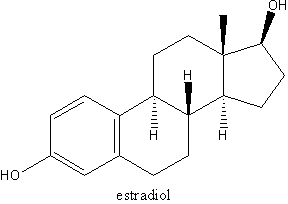Happy New Year to all my readers and special thanks to the thoughtful physicians who continue to share their wonderful words of wisdom. Hopefully, 2004 will be a great year for all of you!
We last covered the topic of tips for the gynecology clinic about 6 months ago. If you missed them, remember that every pearl published since 1999 can be found at the OB.GYN. NEWS Web site. Just go to www.eobgynnews.com and click on Clinical Pearls in the Archive Collection on the right side of the home page.
[check] Hey, docs, try some socks!
Dr. John R Puckett Jr. of Winter Haven, Fla., uses socks to cover the stirrups on his exam tables. For a few bucks you can get creative and use socks with bold colors and interesting designs. Dr. Puckett also recommends that you put your speculums on a heating pad and place them in the exam table's drawer. We do this, and patients really appreciate it. Just make sure that the pad has been set on "low" and that the electric cord is not crushed by the drawer.
[check] Say farewell to the smell.
Dr. Arleigh Ancheta of Port Richey, Fla., notes that when removing or replacing vaginal pessaries, the discharge and odor can be unbearable. Dip a large cotton swab into hydrogen peroxide and insert it intravaginally before and after removal of the pessary, and the odor will instantaneously disappear!
[check] Remove the ring without the sting.
Dr. Bill Growdon of Santa Monica, Calif., notes that the Estring estrogen ring can be difficult and painful to remove from a patient with urogenital atrophy and a stenotic introitus. He adds that pulling the device out with a ring forceps can be painful.
Instead, to remove the ring, he uses the smallest lubricated speculum that allows for patient comfort.
Take a single-toothed tenaculum and, after visualizing the ring, slip a single tooth behind it and carefully close the clamp. Then apply gentle traction and rotate the ring until it slips inside the "trough" of the speculum blades while deep in the vagina. Now pull the ring out, sliding the ring edges down the blades, and remove the speculum.
No pain and another happy patient!
[check] Lesion too faint? Try the paint.
Dr. H. Zis Weisberg of Corpus Christi, Tex., says that when performing colposcopy, especially for atypical squamous cells of undetermined significance (ASCUS) or low-grade squamous intraepithelial lesions (LGSIL), the lesion is not always easily visible after staining the cervix with dilute acetic acid. Instead, try painting the cervix with Lugol's solution.
Dr. Weisberg says this will frequently identify a nonstaining area that turns out to be dysplasia.
[check] The most important question?
Dr. Diane Aslanis of Far Rockaway, N.Y., frequently asks medical students and residents to name the most important question to ask their patient. Students usually remember to ask about allergies and patient history items.
But Dr. Aslanis says the most important question to ask patients is, "Do you have any questions?"
DR. BRUCE L. FLAMM is area research chairman and a practicing ob.gyn, at the Kaiser Permanente Medical Center in Riverside, Calif.
COPYRIGHT 2004 International Medical News Group
COPYRIGHT 2004 Gale Group



